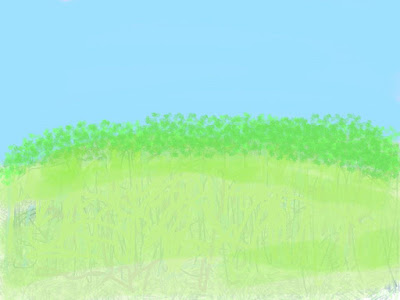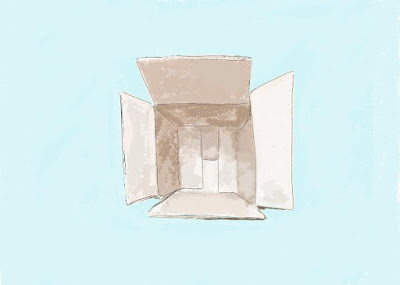



Spring Landscape #22 Windmill, 24" x 18", oil on panel
Spring Landscape #23 Farm, 18" x 24", oil on panel

Spring Landscape #24 Land, Cloud, Trees, 18" x 24" oil on panel




Spring Landscape #22 Windmill, 24" x 18", oil on panel
Spring Landscape #23 Farm, 18" x 24", oil on panel

Spring Landscape #24 Land, Cloud, Trees, 18" x 24" oil on panel

Spring Landscape #21 Green and Pink Trees 12" x 12", oil on panel
On June 1st, 2010, The Guggenheim Museum of Art, New York City, will announce the winners of its competition, Contemplating The Void.
Competition Description:
To celebrate the close of the Guggenheim’s 50th Anniversary year, we invite you to create your own dream intervention of the Guggenheim Museum. Now you can take on the same challenge that 200 artists, designers, and architects took on for the exhibition Contemplating the Void: Interventions in the Guggenheim Museum.
Contestants were asked to:
• Your submission can be a hand sketch, a computer rendering, a watercolor, a painting, a photo collage—in other words, any 2-D format that helps communicate your ideas. "
These ideas were then uploaded to flickr, where they are still on view.
I saw in person the actual exhibit at the museum which was the spring board for the on-line contest. It was like seeing professionals doing an art school assignment,, creative people stretching their imaginations to solve the same problem uniquely. Some filled the center of the museum with trees, chocolate, a butterfly garden, gay pride stripes, laundry on a clothesline, glitter, and an inverted spiral. It epitomized the brainstorming necessary in any creative endeavor.
My creative endeavors this week include the use of the center spatially, though not in any way involving the Guggenheim or its architect, Frank Lloyd Wright. #19 and #21 are squares with circular compositions. #19 is about the sky filling the void, the space framed by a circlet of trees and leaves. The green dots get smaller towards the center, pulling you up, while the blue central dots are somewhere in between, ambiguously falling or rising. The sky is a solid but thinner. It holds promise.
#21 appears to people differently. My husband thinks it looks like a pink moon through the trees. My son says it is like looking up through a tunnel at the them, "Cool!". I made it by looking through my hand like it was a telescope at the trees across the street, one of which is a pink magnolia. Pink, a type of red, complements the green and is echoed by the red-brown, large dots in the foreground. The dots are like the tiles of a mosaic or the sections of glass in a rose window. The paint is velvety, something the those media are not. It is like a kaleidoscopic mandala, having motion while mandalas are still. Similar to a mandala, however, I think the image invites meditation, daydreaming and glazing over. A friend suggested they look like the images used to check color blindness. They do resemble them in their construction, their elements, but the paintings are obviously much more.
#20 is left out of this conversation. It sits vertically, angular, with dots rebelling, buoyantly asserting their individuality. I like that.





